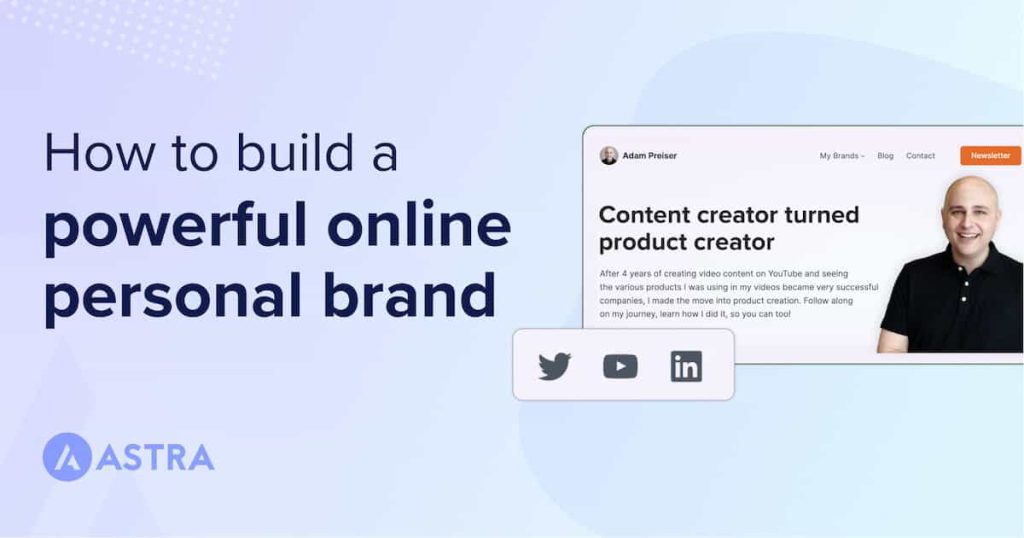Have you ever Googled yourself?
Sure you have.
You’re not alone. We’ve all done it at one time or another, even if it’s just out of curiosity.
Other people are also searching for your name online.
Depending on what they find, they’ll forge an opinion about you that will benefit or harm you depending on how well you have crafted your online personal brand.
People search for you before hiring you, before buying your digital product or just to learn more about you before they start following and trusting you.
Building a powerful online personal brand is more important than ever.
In this guide we’ll give you the best tips to create an amazing one.
Why online personal branding is important
People no longer ask their friends for their opinion about a person. They ask Google.
They can find a wide range of opinions there which will give them a more honest and less biased view of reality.
That’s why having a website and an online personal brand is so important.
Strong personal branding is the lever that will push your personal and professional career forward.
Let’s look at Adam Preiser who has been building and working on his personal brand for over a decade.
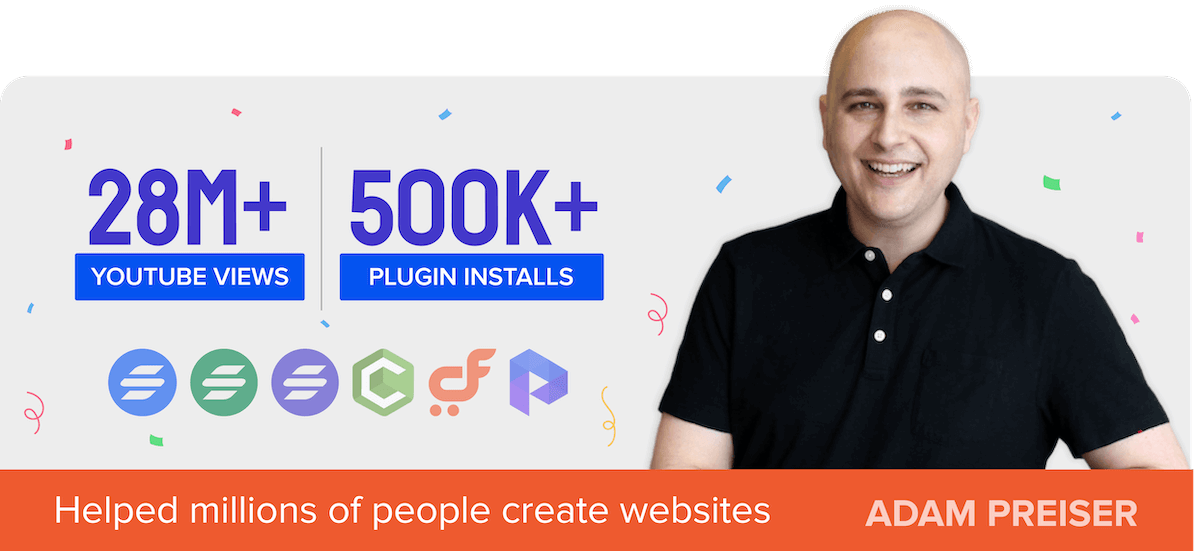
Thanks to having a hard-earned personal brand, he didn’t have to start from scratch when he launched his new suite of SureCrafted products.
If you go to the SureMembers website and see that he is the founder, you automatically start to trust the product, because if you trust the person, you trust the product, right?.
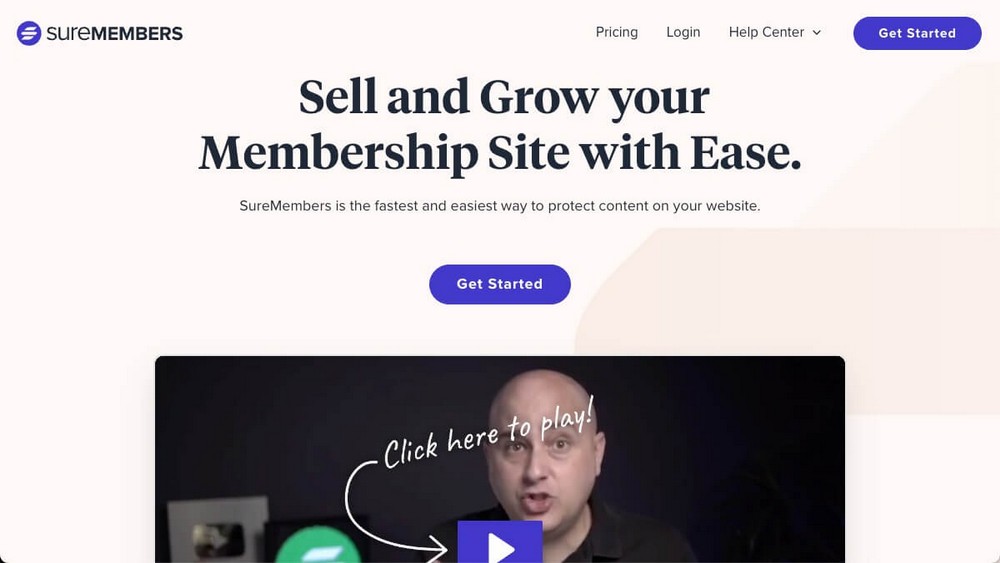
Adam has a lot of experience with WordPress and that expertise expands and spreads all around him.
Not only to his own products but also to those of third parties that he recommends.
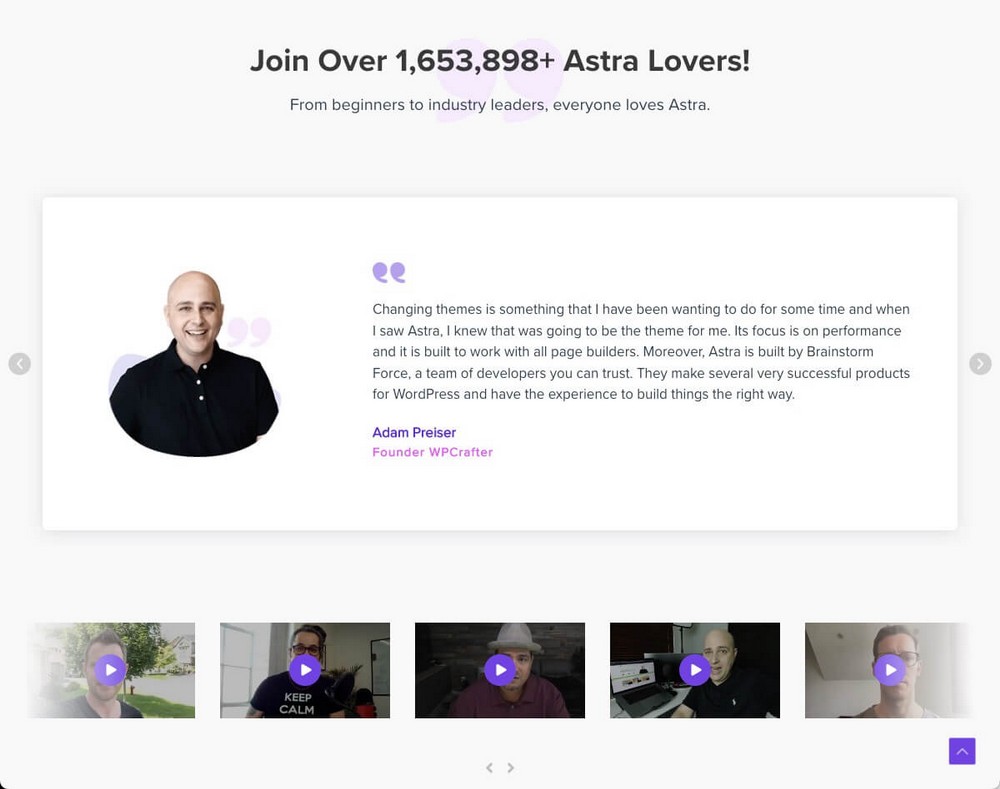
Once he has a successful personal brand, Adam can sell much more easily, which translates into a better income.
If you don’t want to freelance but to work in a good company, a carefully crafted online presence will also help with that.
If you would have to hire a person:
Would you pay more attention to the one who just gives you a CV, or to the one who backs up his experience with an online presence?
No matter how you look at it.
Building your online personal brand only has advantages.
So let’s get started.
How to build a powerful online personal brand in 3 steps
So, how do you create an online presence that helps you stand out, establish credibility and attract new opportunities?
In this guide we’ve simplified the process into 3 simple steps:
- Define your personal brand.
- Establish your online presence.
- Grow your personal brand.
Step 1. Define your personal brand
Before building anything, you must know what you want to build.
In this context it means defining your personal brand.
Values
Values are the beliefs that guide your actions. They help you represent who you are.
But most importantly, they help you connect with your followers at an emotional level. That’s why you should share them.
If humor is of great value for you, show it when creating and growing your personal brand.
What do you want people to picture when they think of you?
If you’re having trouble coming up with some ideas, here’s a list of 100+ values and beliefs that you can analyze to find out which ones you feel more identified with.
In Adam’s case, simplicity is a very important value. It’s something he conveys in his tutorials and especially in his products.
To build a strong personal brand, I always go back to the famous Zig Zigler quote, “You Can Have Everything In Life You Want, If You Will Just Help Enough Other People Get What They Want.”
It boils down to being generous, I try to personally help as many people as possible.
– Adam Preiser
Target audience and goal
Defining a target audience and a goal will also help improve engagement with your audience.
In this case on a more rational level.

- Target audience: Non-techie.
Are you a non-techie person? → Adam is your guy. - Goal: The website you always wanted.
Do you want a great website? → He can help you with it.
If you need information to create or improve your website in a simple way without using code, you’ll associate that thought with Adam.
PRO TIP:
If you find it difficult to define your personal brand, think about what you would like the headline of a newspaper to say about you.
e.g. “This online entrepreneur helps parents (audience) to raise children in an environmentally friendly way (goal).”
Unique selling proposition
This step is kind of optional, but can be important for your online personal brand.
You can be unique in your hometown, but online you’ll find a lot of people that share your values, your target audience and your goals.
Coming up with a unique selling proposition will set you apart from them.
This USP is defined easier when we talk about a product or service rather than a personal brand.
But here is a tip.
What’s more unique than your personal experience?
Do you want to learn about WordPress from a random blogger or from someone who has the experience of having founded several very successful plugins and tools?
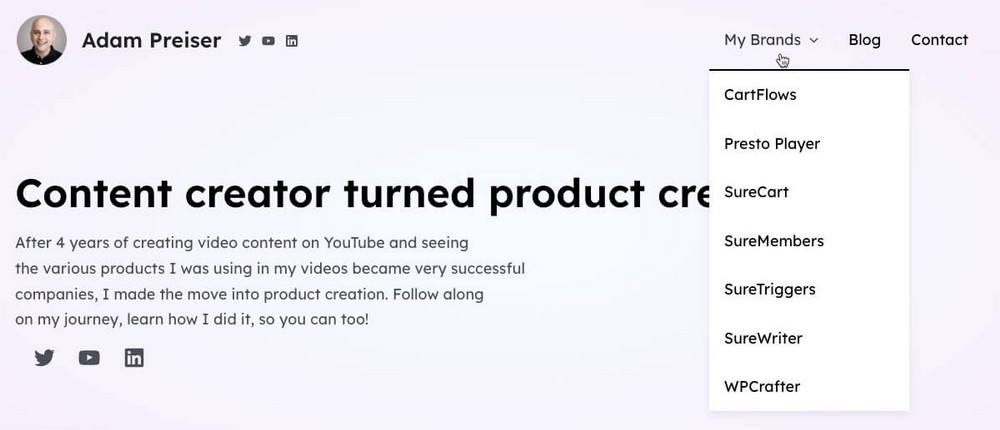
Look and feel
We live in a visual world where we’re able to recognize and remember everything around us.
Coca Cola is red and fun and Astra is purple and casual.
The design of your personal brand is important. And we’re not talking only about colors and fonts.
If your value is simplicity your online presence should reflect that in your written content or in your photos.
You should choose a style in line with the values and goals you have defined. But what’s more important is to use that style consistently.
Try to find a photo in this article where Adam is not wearing a black t-shirt!
And here’s another little trick.
What’s more personal than yourself?
Unless you have a twin brother or sister, your face is unique, use it!
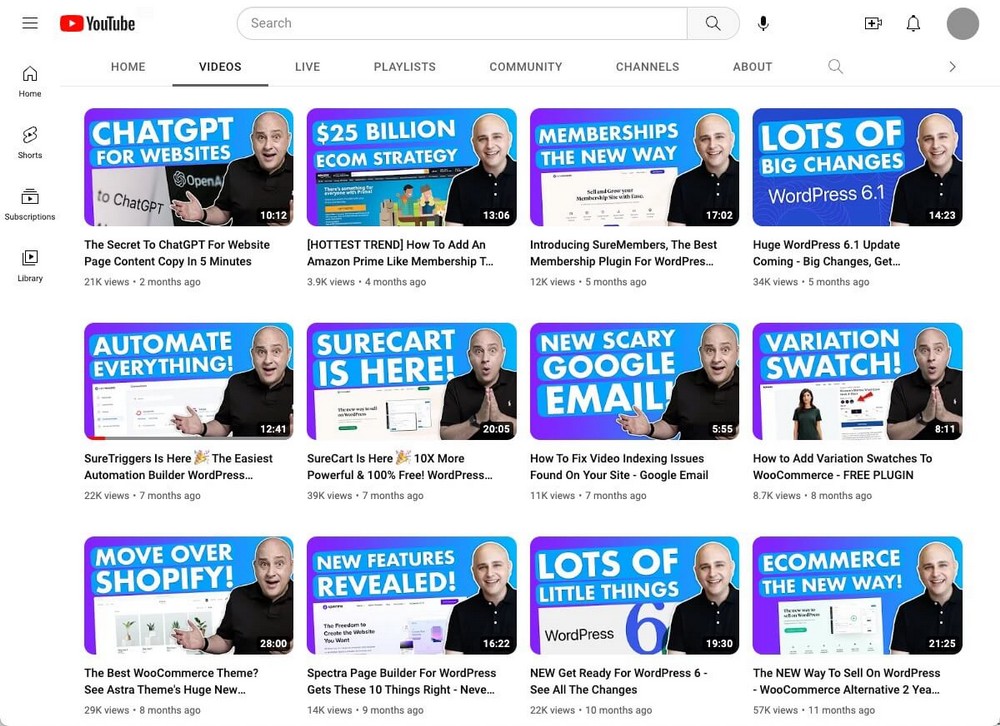
Step 2. Establish your online presence
It’s time to start building everything you just designed in the previous step.
Analyze your current situation
When we talk about online presence we usually refer to Google search results, since most people will search for us using this tool.
We only usually pay attention to the top ten search results
Having about 5 results under your control is more than enough since people don’t usually scroll much further than that.
The idea of controlling these positions is that you can tweak them as much as possible so people see what you want them to see about you.
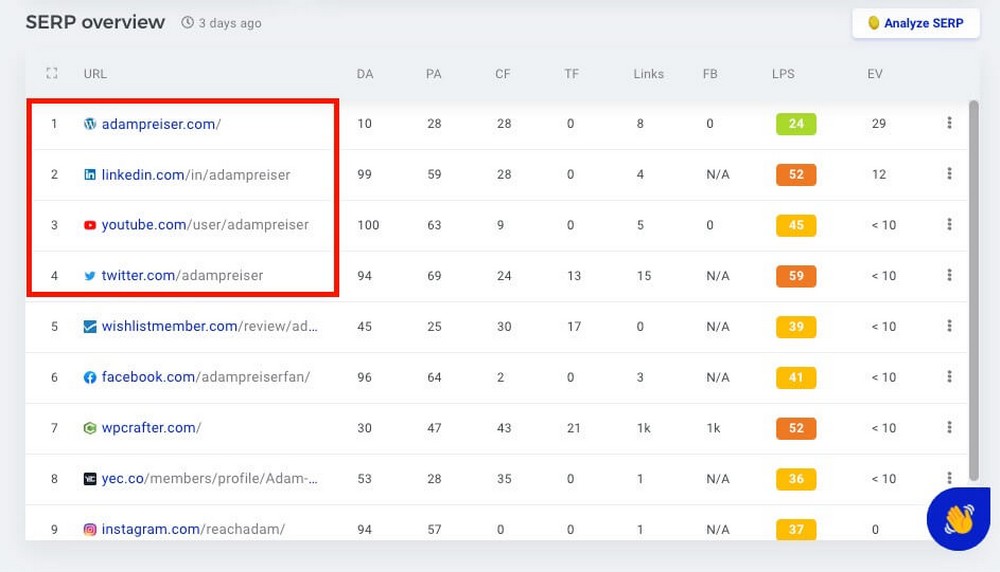
Adam is in control of the top Google rankings when people search for his name.
He can modify his content and appearance on demand to adapt it to the image he wants to portray.
Create your website
The top 1 position in Google gets the highest percentage of clicks. That’s why you should create a website and rank it there.
This is usually simple if you are trying to position your personal name, which we recommend you use for the domain itself (e.g. firstnamesurname.com)
Within your own website you’ll have full freedom to tailor your online presence to your liking and prevent your content and persona from becoming mixed up with other elements like with Twitter or other social network.
Astra and Starter Templates can help you get a quality website in a matter of minutes.
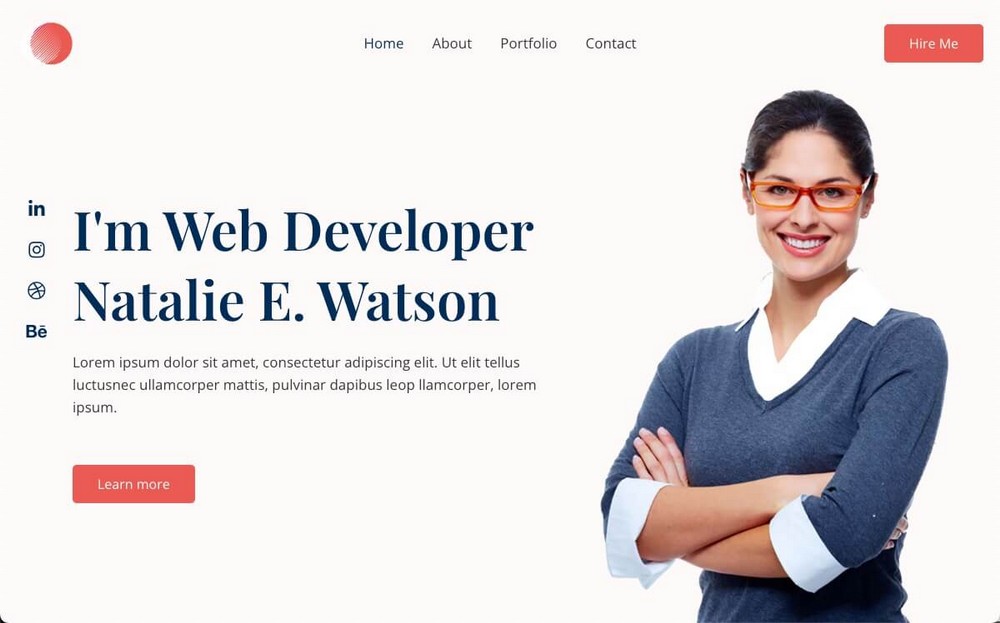
Sign up for social media and other platforms
Your website is one of the most important assets when it comes to personal branding.
But you also have to fill the rest of Google’s top positions!
Social media platforms are the perfect way to do it.
You should pay special attention to LinkedIn as many companies also use its internal search engine to find not only workers but also occasional collaborators to do interviews or hire as speakers.
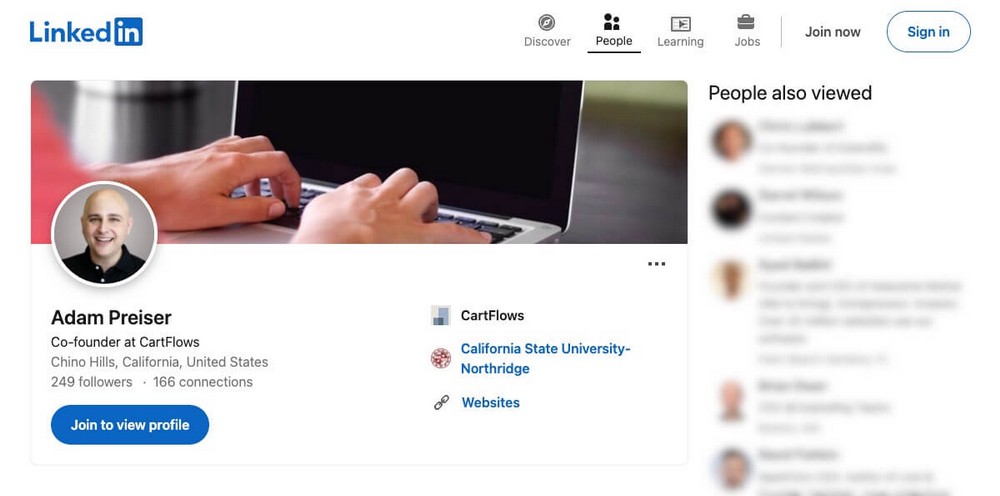
Remember that Google results are displayed with priority.
So after your website and probably LinkedIn, maybe you should not focus on ranking a generic social network like Twitter or Facebook.
There are other platforms that can boost your personal brand more effectively:
- Behance if you’re a designer.
- Github if you’re a developer.
- Fiverr if you’re a freelancer.
- And so on.
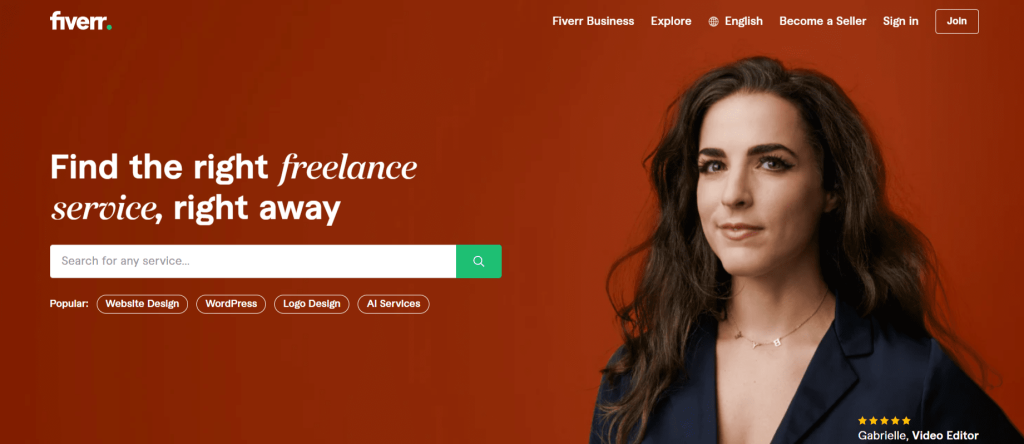
Create consistent usernames and profile images across all of them and keep the same overall style that you have defined on your website.
The most important thing to remember is that you must set a priority for the websites you want to appear in Google and work on them in that order.
Step 3. Grow your personal brand
Defining and creating a digital space for your personal brand is not enough if you don’t make it grow.
Growing your brand will help you strengthen it, establish your credibility, and position yourself as an expert in your field.
Create content
Creating content is a very effective way to grow because you’ll be able to reach more people organically.
The most common method is to write articles on your blog, create posts on social networks or share videos on YouTube.
All of these help with reach.
PRO TIP:
Although podcasts may not have as much growth potential as other options, they greatly improve engagement and your brand image, as the voice is a very personal and relatable element.
Don’t forget to create premium content such as books or online courses. Their reach is smaller but they help a lot to position yourself as an expert.
Curate content
Content curation is a relatively easier way to become a reference in a particular field.
Instead of creating content from scratch, you can search, organize and present relevant information to your audience in an easy and digestible way.
Like news.
For instance, Adam sharing news about AI will improve his credibility as an expert when he officially launches SureWriter.
Collaborate with other people
Don’t limit yourself to your website and your platforms when it comes to growing your personal brand.
Surrounding yourself with people who share your values, target audience and goals will skyrocket your growth.
Co-creating products, giving interviews, participating in third-party podcasts or attending events as a speaker are some of the easiest ways to collaborate.
Engage with your audience
Engaging with your audience is crucial because it builds trust and loyalty, the essential pieces of a strong persona.
You’ve made a great effort to define your personal brand, establish it online and make it grow.
Take care of it.

Adam engages continuously with his audience on Facebook
Ask for feedback, respond to comments on your blog and messages on social media or host live Q&A sessions.
That will help your audience feel valued and heard
Participate in online communities
What if you don’t have your own audience to interact with?
Then you can add value in different online communities or sites that are already created around the topic or values you’re interested in.
Hang where your target audience is: subreddits, Quora spaces, forums… Even other people’s Facebook groups!
Help others, share your opinion and knowledge and maybe some of your own content. But don’t be spammy!
Wrapping up
Creating a polished online personal brand that helps you get closer to that goal is relatively simple.
Defining what you want to be and how you want to show yourself to the world is probably the most complex part.
By breaking this down into smaller steps such as defining your values, your target audience or the goals you want to help them achieve, you’ll find it easier to outline your identity.
A personal online brand is not a binary system where you have it or you don’t have it. You always have one.
Even not appearing in Google already says something about you!
That’s why you should not stop investing time and effort in improving it.
Creating public or premium content, collaborating with other professionals and people around you and engaging with your audience.
The sooner you start planting, the sooner you’ll start reaping the rewards.
So get started on it today!
Do you know of any other great WordPress personal brand besides WPCrafter that has caught your attention?
Let us know in the comments below!
Disclosure: This blog may contain affiliate links. If you make a purchase through one of these links, we may receive a small commission. Read disclosure. Rest assured that we only recommend products that we have personally used and believe will add value to our readers. Thanks for your support!
